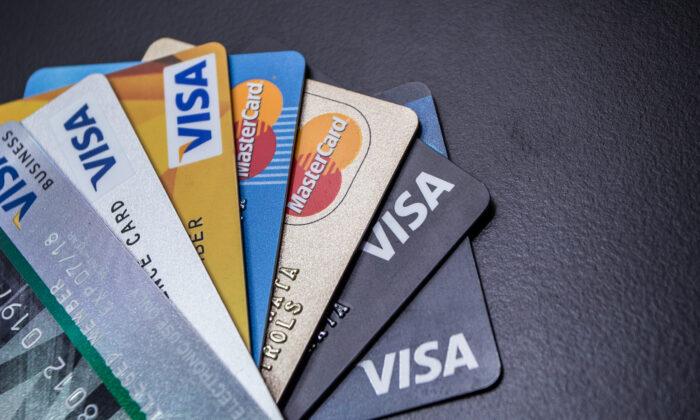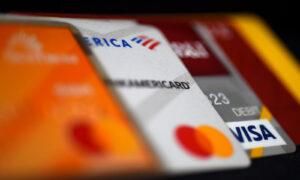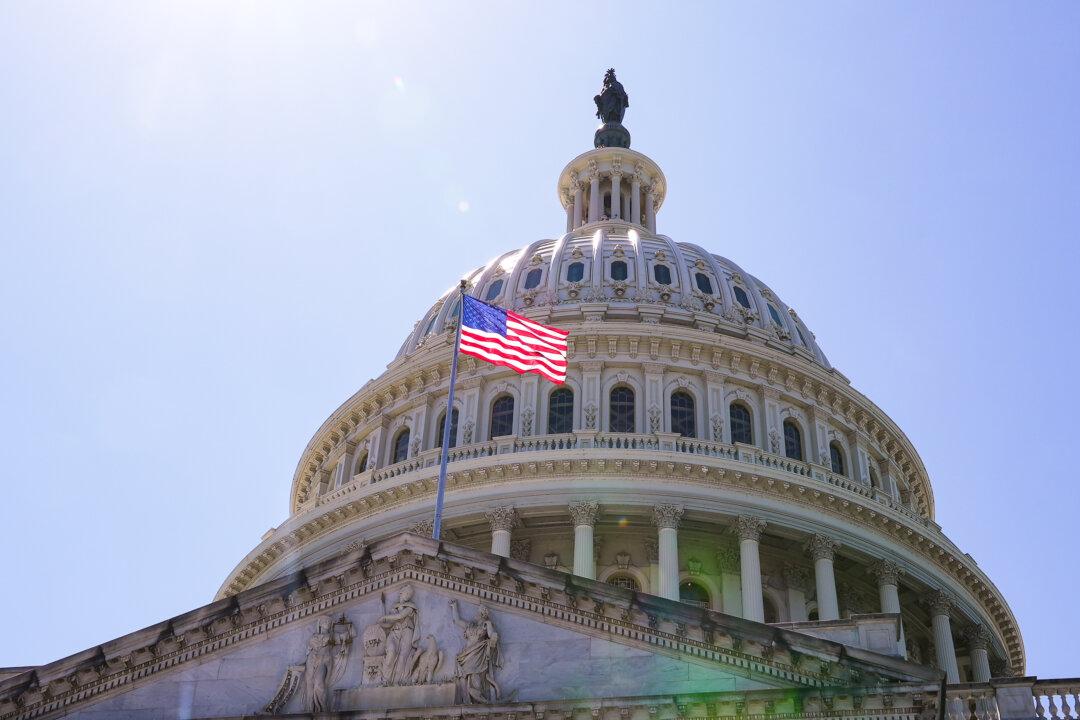Interest rates on credit cards have risen to their highest levels in decades as the Federal Reserve continues to tighten its monetary policy in an attempt to curb decades-high inflation.
The credit card rate has increased to an average of 20.72 percent, according to Bankrate, which indicated that it’s the highest figure since it started keeping track in September 1985. Meanwhile, LendingTree’s data show that as of late September, the credit card interest rate stand at 24.45 percent, an all-time record for the firm.
In comparison, the average credit card interest rate stood at 14.22 percent in 2018, according to NerdWallet. It was only 12.89 percent in 2017, the data show.
In May 2022, the average U.S. interest rates stood at 16.41 percent, Bankrate data show. By July of that year, it was 17.01 percent and by August 2022, it stood at 17.67 percent.
“Credit cards were expensive before, they are more expensive now, and they will be even more expensive by the end of the year,” Ted Rossman, senior industry analyst for CreditCards.com, told Reuters several weeks ago.
At the same time, nationwide credit card debt rose $46 billion for the quarter, and $100 billion compared to the same time last year, according to the new Household Debt and Credit Report from the New York Fed. That 13 percent year-over-year increase is the largest jump in over 20 years.
The Federal Reserve recently said that credit card debt in the United States is at all-time record levels. Earlier this year, the debt surpassed $1 trillion, it has said. Meanwhile, credit card delinquencies are at an 11-year high, as measured using a four-quarter average, the Fed data showed.
“Despite the many headwinds American consumers have faced over the last year—higher interest rates, post-pandemic inflationary pressures, and the recent banking failures—there is little evidence of widespread financial distress for consumers,” Federal Reserve Bank of New York researchers wrote in a blog accompanying the data release in August.
Bigger debts, paired with bigger interest rates, are putting some household balance sheets in the danger zone. “Credit-card interest rates seem to always go up and never go down,” Ed Mierzwinski, senior director of the federal consumer program for advocacy organization U.S. PIRG, reported Reuters. “The banks are getting away with it, and have been for a long time. They raise rates whenever they have an opportunity.”
Meanwhile, some personal finance writers have increasingly said that consumers should attempt to pay off their credit card balance every month.
Lawmakers Take Aim
Some lawmakers and federal regulators are now calling for credit card companies to put caps on rates and lower fees as debt levels increase amid high rates.Sen. Josh Hawley (R-Mo.) introduced a bill last month to place a cap on credit card rates, also known as the annual percentage rate (or APR), due to “higher financial burdens” that are being carried by working Americans.
“Americans are being crushed under the weight of record credit card debt—and the biggest banks are just getting richer,“ the Republican lawmaker said in a statement. ”The government was quick to bail out the banks just this spring, but has ignored working people struggling to get ahead. Capping the maximum credit card interest rate is fair, common-sense, and gives the working class a chance.”
Earlier this year, four senators introduced the Credit Card Competition Act, which would aim to reduce some card transaction fees that are passed on to consumers. They include Sens. Dick Durbin (D-Ill.), J.D. Vance (R-Ohio), Peter Welch (D-Vt.), and Roger Marshall (R-Kan.).







